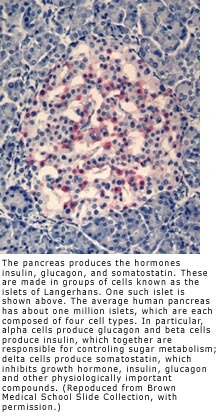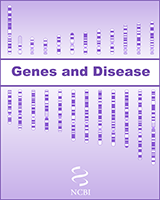NCBI Bookshelf. A service of the National Library of Medicine, National Institutes of Health.
National Center for Biotechnology Information (US). Genes and Disease [Internet]. Bethesda (MD): National Center for Biotechnology Information (US); 1998-.

The endocrine system is a complex collection of hormone-producing glands that control basic body functions such as metabolism, growth and sexual development. The endocrine glands consist of: pineal; pituitary; thyroid and parathyroids; thymus; adrenals; pancreas; ovaries (female); and testes (male).
Hormones are the chemical signaling molecules produced by the endocrine glands and secreted directly into the bloodstream. They travel through the blood to distant tissues and organs, where they can bind to specific cell sites called receptors. By binding to receptors, hormones trigger various responses in the tissues containing the receptors.
In addition to the classical endocrine organs, many other cells in the body secrete hormones. Myocytes in the atria of the heart and scattered epithelial cells in the stomach and small intestine are examples of what is sometimes called the "diffuse" endocrine system. If the term hormone is defined broadly to include all secreted chemical messengers, then virtually all cells can be considered part of the endocrine system.
Advances in molecular genetics have led to a greatly strengthened understanding of the mechanisms of certain of the hereditary endocrine disorders. This section of genes and disease focuses on disorders for which the primary gene defect has been characterized or recently identified.
- Glands and Hormones - Genes and DiseaseGlands and Hormones - Genes and Disease
Your browsing activity is empty.
Activity recording is turned off.
See more...
